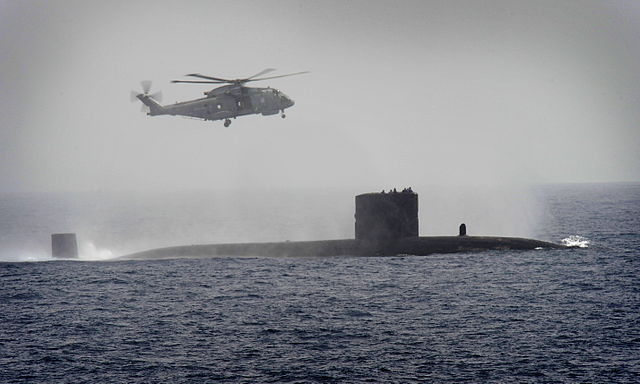Royal Navy Submarine Service
The Royal Navy Submarine Service is one of the five fighting arms of the Royal Navy. It is sometimes known as the Silent Service, as submarines are generally required to operate undetected.
HMS Holland 1, the first submarine to be commissioned by the Royal Navy. She can be seen at the Royal Navy Submarine Museum, Gosport.
The Swiftsure-class submarine Superb on the Clyde in Scotland.
The "Dolphins" badge, issued to all British submariners on completion of training. It is worn on the upper left breast, just above any medal ribbons.
The Jolly Roger flag of HMS Proteus (N29) in 1942; the bars symbolizing ships sunk by torpedo, the stars denote ships sunk by gunfire and the crossed can openers record surviving a ramming.
Trafalgar-class submarine
The Trafalgar class is a class of nuclear-powered fleet submarines (SSNs) in service with the Royal Navy, and the successor to the Swiftsure class. Like the majority of Royal Navy nuclear submarines, all seven boats were constructed at Barrow-in-Furness shipyard, Cumbria. With only one boat remaining active and in commission and six retired from the seven originally in service, the class makes up part of the Royal Navy's nuclear-powered ‘hunter-killer’ submarine force. The Trafalgar class has nearly been replaced by the larger and more capable Astute class, of which five are commissioned.
HMS Trafalgar in 2008
Turbulent with a Merlin helicopter from Type 23 frigate HMS St Albans, during an anti-submarine exercise in the Gulf of Oman, 2011.






